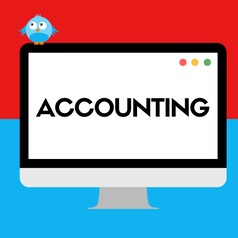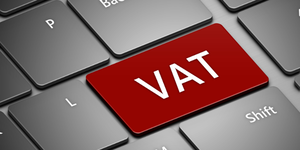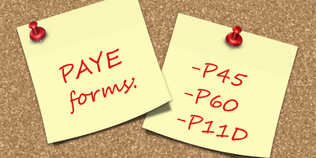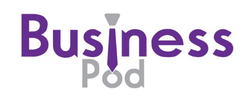Accounting

Record keeping
It is important from day one that you keep accurate financial records.
By keeping your financial information up to date, it will help make sure you:
You may ask why you need to keep records. The ultimate answer is because HMRC need to know how much money you have made to know how much tax to charge you.
As a sole trader you have to fill in a tax return each year and the law says that you should keep all the records and documents you need to enter the right figures on to your return, and if HMRC need to check your return, they can ask to see the records you used to complete it.
As a director of a limited company you have a statutory duty to keep accurate company records.
There are now penalties if you do not keep adequate records, and penalties for any inaccuracies on your tax return, however people do make mistakes and HMRC say that you will not have to pay a penalty if you can show them that you took reasonable care to get your return right.
From April 2019 ‘Making Tax Digital’ came in for VAT registered businesses with turnover of over £85,000. This now means that the VAT returns from April 2019 now have to be filed to HMRC’s new system via software. Historically you could register with HMRC to file your VAT return through their website, however from April 2019 you now need to file this via software that talks to HMRC directly like XERO.
You need to keep your records for a minimum of six years in case they are needed for review.
HMRC sets out guidance with regard to basic record keeping. Here is a link to the HMRC guidance - https://www.gov.uk/self-employed-records
It is important from day one that you keep accurate financial records.
By keeping your financial information up to date, it will help make sure you:
- record all of your expenses and income so that you pay the right amount of tax
- help you see quickly what you are owed by customers and how much you owe suppliers
- Plus, if you need to ask the bank for a bank loan or credit, they will want to see your up-to-date financial information and by keeping good records it should save your accountant time to produce the reports needed and therefore you should have lower accountancy costs.
You may ask why you need to keep records. The ultimate answer is because HMRC need to know how much money you have made to know how much tax to charge you.
As a sole trader you have to fill in a tax return each year and the law says that you should keep all the records and documents you need to enter the right figures on to your return, and if HMRC need to check your return, they can ask to see the records you used to complete it.
As a director of a limited company you have a statutory duty to keep accurate company records.
There are now penalties if you do not keep adequate records, and penalties for any inaccuracies on your tax return, however people do make mistakes and HMRC say that you will not have to pay a penalty if you can show them that you took reasonable care to get your return right.
From April 2019 ‘Making Tax Digital’ came in for VAT registered businesses with turnover of over £85,000. This now means that the VAT returns from April 2019 now have to be filed to HMRC’s new system via software. Historically you could register with HMRC to file your VAT return through their website, however from April 2019 you now need to file this via software that talks to HMRC directly like XERO.
You need to keep your records for a minimum of six years in case they are needed for review.
HMRC sets out guidance with regard to basic record keeping. Here is a link to the HMRC guidance - https://www.gov.uk/self-employed-records
How to keep records
With regard to keeping your records you have five options:
If you are going to be VAT registered, then as already advised you would need to use option 4 or 5 due to the new MTD (making tax digital) requirements.
With regard to keeping your records you have five options:
- Keep manual handwritten records on paper
- Use spreadsheets
- Use a desktop computerised accounting system such Sage, QuickBooks or VT Software
- Use an online accounting system such as XERO, Freeagent, Kashflow or QuickBooks Online
- Outsource it to a bookkeeper or accountant
If you are going to be VAT registered, then as already advised you would need to use option 4 or 5 due to the new MTD (making tax digital) requirements.
Preparing accounts
Year end accounts are accounts that are prepared on an annual basis and the information is used to calculate any tax payable.
When preparing management accounts or your year end accounts there are two main financial statements that are prepared as standard, these are:
Before we go any further here is some basic accounting terminology:
General:
Profit and loss items:
Balance Sheet Items:
Year end accounts are accounts that are prepared on an annual basis and the information is used to calculate any tax payable.
When preparing management accounts or your year end accounts there are two main financial statements that are prepared as standard, these are:
- Profit and Loss Account (also now known as an Income Statement) - a profit and loss account contains details of all of your income/sales into the business, less all of your allowable expenses
- Balance Sheet (also known as a Statement of Financial Position) - a balance sheet is a list of the assets and liabilities of the business, along with the equity and reserves.
Before we go any further here is some basic accounting terminology:
General:
- Customers – people that buy things from you
- Suppliers – businesses that you buy things from
- Trade Debtors – customers that owe you money
- Trade Creditors – suppliers that you owe money to
Profit and loss items:
- Income – sales, turnover, interest received
- Cost of sales – direct costs, variable costs, purchases, materials, subcontractor costs
- Administrative expenses – overheads, rent, rates, utilities, stationery, computer costs, wages, legal fees, accountancy fees etc.
- Taxation – corporation tax for limited companies
Balance Sheet Items:
- Fixed assets – equipment, fixtures and fittings, motor vehicles – capital items that you use in your business and are likely to last more than 12 months
- Current assets – stock, cash at bank, trade debtors
- Current liabilities – bank overdraft, short term bank loans, trade creditors, hire purchase, corporation tax, PAYE due, VAT due
- Long term liabilities – loan term loans such as mortgages, for long term hire purchase
- Reserves - profits that are left after tax that could be paid to owners
- Equity – shares issued in a limited company
Allowable expenses
I get asked a lot ‘Can you advise me on what expenses I can claim for?’, and my answer is as follows, if you can 100% hand on heart say this expense is 100% purely for business purposes then it is normally allowable, there are of course exceptions to which I say, if you’re not sure, put it in with your records, mark it with a ‘?’ and then let your accountant advise you on this at your year end, or ask your accountant throughout the year.
If you have a current contract for your mobile phone in your personal name and you use it primarily for business, you can work out how much you use it for business and put a pro-rata amount though as a business expense. You do need to substantiate this though, so if you put 75% of the cost of your phone through the business and you ever have an HMRC investigation you would need to provide an itemised bill and be able to show that 75% of your calls are actually for business purposes, therefore always underestimate than overestimate.
The profit and loss account above lists the main categories of items that are allowable. Here is a link to HMRC which will give you further information - www.gov.uk/expenses-if-youre-self-employed/overview
If you are a limited company, you do not want to put motor costs through the company unless it is for a van/commercial vehicle. Instead, you will need to keep a mileage log and claim mileage at 45p per mile up to 10,000 miles and 25p over 10,000 miles. As a sole trader your accountant may give you the option to put your vehicle in to your accounts if you are using the vehicle primarily for business use, this means you will be able to put all of your motor expenses through, but at the year end they will then add back an element of personal use, you must not do this if you are a limited company as it will create a ‘benefit in kind’ and both your company and you personally will have additional tax to pay. With regard to vehicle expenses, I advise that you speak to your accountant for the best advice for your specific circumstances.
If you work from home, you can put currently put through £6 per week through to contribute towards the cost of running your business from home. This is the maximum amount you can put through without HMRC potentially challenging the amount. You can put more through based on a calculation of costs such as light and heat, council tax, insurance, mortgage interest which is then pro-rata’d based on the number of rooms that are used for business purposes only, however please seek professional advice if wishing to use this method. Here is a link to some examples from HMRC’s website - www.hmrc.gov.uk/manuals/bimmanual/bim47825.htm
I get asked a lot ‘Can you advise me on what expenses I can claim for?’, and my answer is as follows, if you can 100% hand on heart say this expense is 100% purely for business purposes then it is normally allowable, there are of course exceptions to which I say, if you’re not sure, put it in with your records, mark it with a ‘?’ and then let your accountant advise you on this at your year end, or ask your accountant throughout the year.
If you have a current contract for your mobile phone in your personal name and you use it primarily for business, you can work out how much you use it for business and put a pro-rata amount though as a business expense. You do need to substantiate this though, so if you put 75% of the cost of your phone through the business and you ever have an HMRC investigation you would need to provide an itemised bill and be able to show that 75% of your calls are actually for business purposes, therefore always underestimate than overestimate.
The profit and loss account above lists the main categories of items that are allowable. Here is a link to HMRC which will give you further information - www.gov.uk/expenses-if-youre-self-employed/overview
If you are a limited company, you do not want to put motor costs through the company unless it is for a van/commercial vehicle. Instead, you will need to keep a mileage log and claim mileage at 45p per mile up to 10,000 miles and 25p over 10,000 miles. As a sole trader your accountant may give you the option to put your vehicle in to your accounts if you are using the vehicle primarily for business use, this means you will be able to put all of your motor expenses through, but at the year end they will then add back an element of personal use, you must not do this if you are a limited company as it will create a ‘benefit in kind’ and both your company and you personally will have additional tax to pay. With regard to vehicle expenses, I advise that you speak to your accountant for the best advice for your specific circumstances.
If you work from home, you can put currently put through £6 per week through to contribute towards the cost of running your business from home. This is the maximum amount you can put through without HMRC potentially challenging the amount. You can put more through based on a calculation of costs such as light and heat, council tax, insurance, mortgage interest which is then pro-rata’d based on the number of rooms that are used for business purposes only, however please seek professional advice if wishing to use this method. Here is a link to some examples from HMRC’s website - www.hmrc.gov.uk/manuals/bimmanual/bim47825.htm

VAT
You only have to register for VAT if your sales in a rolling 12-month period are over £85,000 (correct as of 6th April 2020). This threshold tends to change in April each year so you need to check what the current rate is at www.hmrc.gov.uk
You can choose to register for VAT even if your sales are below the £85,000 level. The reason you may wish to do this is if you plan to work with large corporate organisations who expect your business to be VAT registered, or you want to make your business to look bigger than it is, because if you are VAT registered people tend to assume you have a turnover of more than £85,000.
To work out when you are at a point you have to register you need to keep an eye on your sales on a monthly basis and look at the rolling 12-month amount. The £85,000 is not looked at on an annual basis in line with your business year end, it is looked at on a rolling 12 month basis, so the current month and the 11 previous months added together, and once you have gone over the £85,000 you need to register within 30 days of the end of the month when you went over the threshold.
The standard rate of VAT is 20% for applying to your products and services to your customers, so if your fee is £1,000, this is your net fee, the VAT will be 20% of £1,000 which is £200, and so the gross fee that the client has to pay you is £1,200. £1,000 is your net business income and £200 is output vat that you need to pay across to HMRC on your VAT return.
To register for VAT visit https://www.gov.uk/vat-registration
When you register for VAT you may be able to reclaim the VAT on some of your historical purchases. There is a time limit for backdating claims for VAT paid before registration. From your date of registration, the time limit is as follows:
If you are going to do this, you must make sure you have copies of the invoices to proof the VAT occurred.
You only have to register for VAT if your sales in a rolling 12-month period are over £85,000 (correct as of 6th April 2020). This threshold tends to change in April each year so you need to check what the current rate is at www.hmrc.gov.uk
You can choose to register for VAT even if your sales are below the £85,000 level. The reason you may wish to do this is if you plan to work with large corporate organisations who expect your business to be VAT registered, or you want to make your business to look bigger than it is, because if you are VAT registered people tend to assume you have a turnover of more than £85,000.
To work out when you are at a point you have to register you need to keep an eye on your sales on a monthly basis and look at the rolling 12-month amount. The £85,000 is not looked at on an annual basis in line with your business year end, it is looked at on a rolling 12 month basis, so the current month and the 11 previous months added together, and once you have gone over the £85,000 you need to register within 30 days of the end of the month when you went over the threshold.
The standard rate of VAT is 20% for applying to your products and services to your customers, so if your fee is £1,000, this is your net fee, the VAT will be 20% of £1,000 which is £200, and so the gross fee that the client has to pay you is £1,200. £1,000 is your net business income and £200 is output vat that you need to pay across to HMRC on your VAT return.
To register for VAT visit https://www.gov.uk/vat-registration
When you register for VAT you may be able to reclaim the VAT on some of your historical purchases. There is a time limit for backdating claims for VAT paid before registration. From your date of registration, the time limit is as follows:
- 4 years for goods you still have, or that were used to make other goods you still have
- 6 months for services
If you are going to do this, you must make sure you have copies of the invoices to proof the VAT occurred.

PAYE
Whether you choose to be a Sole Trader, Partnership or Limited Company, if you need to take on staff you will need to register with HMRC for PAYE as an employer so that you are able to pay your employees. As a director of a limited company, you will need to become an ‘employee’ of the company so that you can pay yourself a salary too, so that you get the tick in the box for your state pension as dividends don’t count as income for national insurance purposes.
As an employer you will need to calculate the wages due to the employee and deduct any tax and national insurance based on the employee’s tax code on a weekly or monthly basis.
A person’s tax code can vary from the standard due to other income, or historic tax liabilities etc. Currently a standard tax code for 2020-2021 is 1250L which means an employee can earn £12,500 a year before paying tax at 20%, this allowance gets split over 12 months, so in effect they can earn £1,041.67 a month before having to pay tax.
The other main tax you have to deduct from your employee’s earnings is National Insurance (NI). The NI amount is 12%. For 2020-2021 the NI threshold for when an employee has to start paying NI is £9,504 per year, which is £792 per month.
For 2020-2021 for employees earning over £50,000 they are higher rate taxpayers and on earnings over £50,000 tax will be deducted at 40% and NI at 2%.
As an employer you have to pay employer NI of 13.8% too, employers NI is payable on earnings over £8,784 per year which is £732 per month. However currently there is an employer’s allowance of £4,000 a year, which means if it is just yourself and one member of staff then it is unlikely you will have to pay employers NI.
There may also be other deductions that HMRC ask you to deduct such as student loan repayments, and deductions from third parties which are normally called ‘Attachment of Earnings’ (AOE) this is often for child maintenance payments or council tax arrears.
The tax, national insurance and student loan deductions need to be paid across to HMRC by the 22nd of the following month they are deducted. Deductions for AOE’s would normally be paid direct to the third party after the wages have been paid.
As an employer you will also need to comply with statutory minimum wage requirements. Here is a link to the current rates - www.gov.uk/national-minimum-wage-rates
Running a payroll can be a relatively easy task; it is when you get complications such as strange tax codes and attachment of earnings that running payroll can be more complicated.
I would always suggest that you outsource your payroll to your accountant or payroll provider.
Another consideration which has happened recently is the introduction of the workplace pension. This is called auto-enrolment and will involve you deducting pension contributions from your employee’s wages and paying it across to a pension provider. The employer will also have to make contributions on behalf of the employee too. More information can be found at www.thepensionsregulator.gov.uk/en/employers
Whether you choose to be a Sole Trader, Partnership or Limited Company, if you need to take on staff you will need to register with HMRC for PAYE as an employer so that you are able to pay your employees. As a director of a limited company, you will need to become an ‘employee’ of the company so that you can pay yourself a salary too, so that you get the tick in the box for your state pension as dividends don’t count as income for national insurance purposes.
As an employer you will need to calculate the wages due to the employee and deduct any tax and national insurance based on the employee’s tax code on a weekly or monthly basis.
A person’s tax code can vary from the standard due to other income, or historic tax liabilities etc. Currently a standard tax code for 2020-2021 is 1250L which means an employee can earn £12,500 a year before paying tax at 20%, this allowance gets split over 12 months, so in effect they can earn £1,041.67 a month before having to pay tax.
The other main tax you have to deduct from your employee’s earnings is National Insurance (NI). The NI amount is 12%. For 2020-2021 the NI threshold for when an employee has to start paying NI is £9,504 per year, which is £792 per month.
For 2020-2021 for employees earning over £50,000 they are higher rate taxpayers and on earnings over £50,000 tax will be deducted at 40% and NI at 2%.
As an employer you have to pay employer NI of 13.8% too, employers NI is payable on earnings over £8,784 per year which is £732 per month. However currently there is an employer’s allowance of £4,000 a year, which means if it is just yourself and one member of staff then it is unlikely you will have to pay employers NI.
There may also be other deductions that HMRC ask you to deduct such as student loan repayments, and deductions from third parties which are normally called ‘Attachment of Earnings’ (AOE) this is often for child maintenance payments or council tax arrears.
The tax, national insurance and student loan deductions need to be paid across to HMRC by the 22nd of the following month they are deducted. Deductions for AOE’s would normally be paid direct to the third party after the wages have been paid.
As an employer you will also need to comply with statutory minimum wage requirements. Here is a link to the current rates - www.gov.uk/national-minimum-wage-rates
Running a payroll can be a relatively easy task; it is when you get complications such as strange tax codes and attachment of earnings that running payroll can be more complicated.
I would always suggest that you outsource your payroll to your accountant or payroll provider.
Another consideration which has happened recently is the introduction of the workplace pension. This is called auto-enrolment and will involve you deducting pension contributions from your employee’s wages and paying it across to a pension provider. The employer will also have to make contributions on behalf of the employee too. More information can be found at www.thepensionsregulator.gov.uk/en/employers

